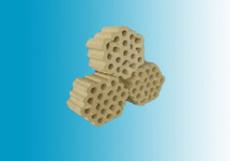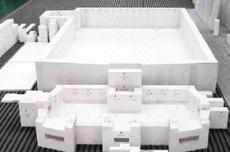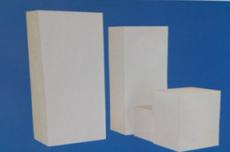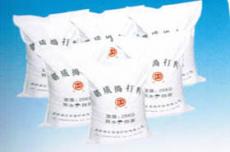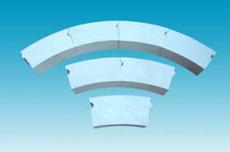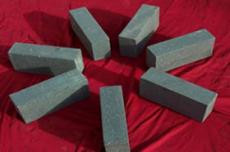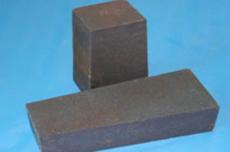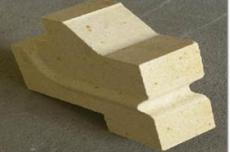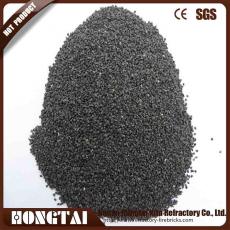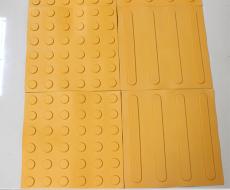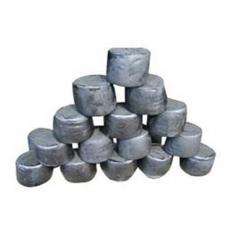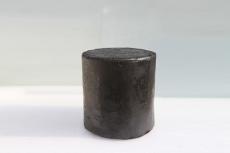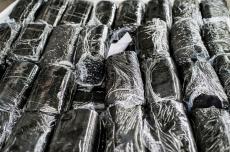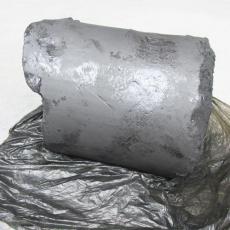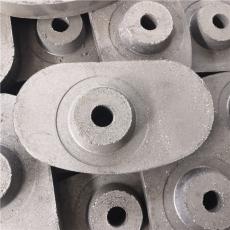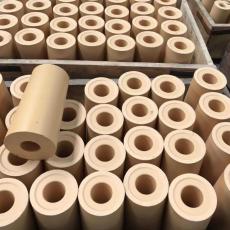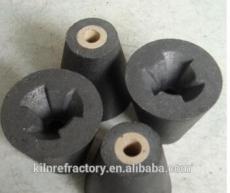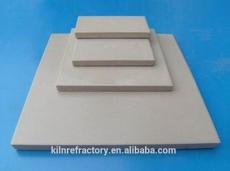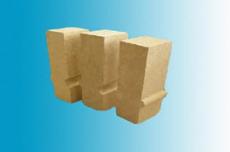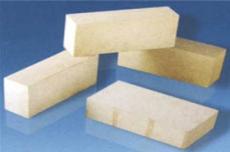
Due to the unstable factors of converter operation, some parts of the lining will be damaged prematurely. At this time, the converter lining needs to be repaired, and the repair should be maintained until the life of the lining is terminated. Repairing the lining is conducive to balancing the damage of the lining, reducing production costs and extending its service life. In the later period of the use of the lining, the amount of repairs continues to increase and the repair time continues to extend. If it has affected the stable operation of the converter, the life of the lining is terminated at this time. In the entire consumption of refractory materials for the lining, the reasonable amount of repair refractory materials is 1/3~1/2. The repair methods of refractory materials for the lining can be divided into two types: throwing and spraying.
01 Refractory materials for throwing
The throwing and repairing materials are thrown into the furnace from the furnace mouth and the furnace body is shaken; the residual heat in the furnace makes the throwing and repairing materials have a certain fluidity; the throwing and repairing materials are spread on the damaged parts of the lining. The refractory materials for patching have the following characteristics:
(1) The refractory materials for patching should have good spreadability at the waste heat temperature of the converter lining (800~1200℃);
(2) The refractory materials for patching should solidify quickly after spreading;
(3) The solidified patching materials have good adhesion to the original lining materials;
(4) The patching materials themselves should have good corrosion resistance.
The basic raw materials of patching refractory materials are magnesia sand and magnesia dolomite sand, and their performance mainly depends on the binder. Commonly used binders are resin, asphalt and their mixtures. Asphalt is cheap and easy to use, so my country's steel companies prefer to use asphalt-bonded refractory materials for patching.
02 Refractory materials for spraying
When a local part of the converter lining (such as the ear shaft) is damaged, the refractory materials can be concentratedly sprayed on the part, and the refractory materials can be sintered with the lining bricks to achieve the purpose of repairing the lining. The spraying methods are mainly divided into three types: wet method, semi-dry method and flame method. At present, domestic and foreign steel enterprises mostly use semi-dry gunning technology.
(1) Wet method: The wet gunning refractory material is mainly magnesia sand, which is put into the gunning tank, mixed with an appropriate amount of water, and sprayed to the damaged part of the furnace lining. The gunning layer reaches 20~30mm. This method is easy to use and can be used three times.
(2) Semi-dry method: The gunning machine used in semi-dry gunning consists of a storage tank, a compressed air delivery mechanism and a nozzle; the gunning refractory material in the storage tank is sent into the nozzle by compressed air, mixed with 10%~18% of water, and sprayed onto the working surface of the furnace lining at a certain speed under air pressure, and the gunning refractory material is bonded and solidified. Factors affecting the gunning effect include:
1) Temperature. The gunning of the furnace lining is carried out in a hot state. The residual temperature of the working surface significantly affects the gunning effect. The appropriate temperature is 800~1000℃;
2) The particle composition, binder, water addition and air pressure of the gunning refractory material. The raw materials for gunning are magnesia sand or magnesium dolomite sand with a particle size of less than 0.1mm, and the binder is powdered sodium silicate, sodium phosphate, calcium, potassium phosphate and chromate, etc. The addition of binder can increase the adhesion of the gunning material, so that it can effectively adhere to the working surface of the furnace lining; at the same time, the binder can form a high-temperature mineral phase at high temperature, which not only makes the gunning material and the working surface of the furnace lining firmly sintered together, but also makes it have good corrosion resistance.
The adhesion rate of gunning refractory materials is generally greater than 85%, and the number of uses is 3 to 5 times.
Semi-dry gunning is a simple and feasible method for repairing converter linings. However, during the gunning process, due to the effect of residual heat, when the added water contacts the repair working surface, a large amount of steam will be generated, and a certain steam pressure will be accumulated, which is not conducive to the bonding of the gunning refractory materials and the working surface.
(3) Flame method: Flame gunning does not add water, but adds combustible materials (such as coke powder, coal powder) and combustible gases (such as propane, methane, oxygen). The gunning refractory material burns and generates heat during the spraying process, and some materials become molten. When they come into contact with the high-temperature working surface, they will quickly melt and sinter together. Flame gunning is mostly carried out in the working gap after the converter taps steel. The gunning time is very short, the residual temperature of the furnace lining is high, the adhesion effect is good, and the service life is also long. It is generally used 10 to 20 times.
